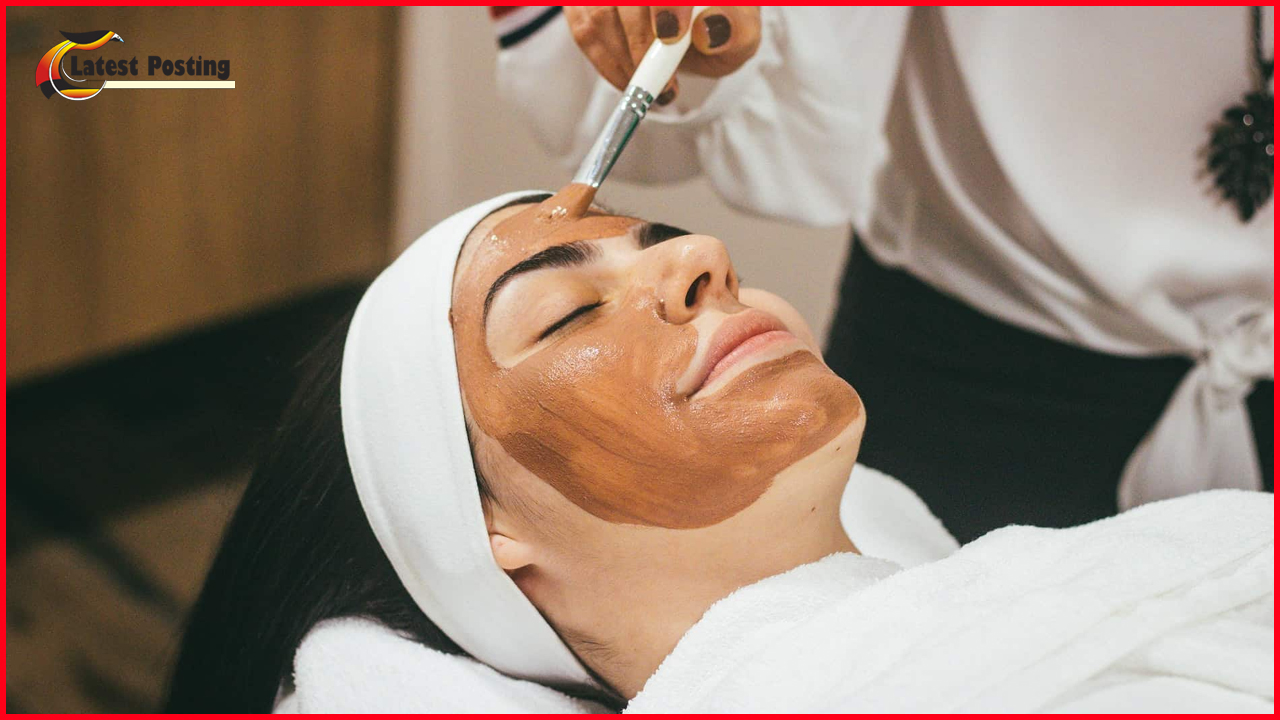Ever wished for that perfect facial glow without stepping out of your home? You’re in the right place! This guide will walk you through five simple steps to achieve radiant skin, just like you would with a professional treatment. From understanding your skin type to selecting the best products, each step is crafted to fit seamlessly into your skincare routine.
Whether you’re new to skincare or already an expert, these tips will help you make the most of your skin. Let’s dive in and get glowing!
Understanding Your Skin Type
Knowing your skin type is a game-changer when it comes to skincare. Everyone’s skin is unique, but it generally falls into one of four categories:
- Oily Skin: Characterized by excess sebum production, oily skin often appears shiny and can be prone to acne and enlarged pores.
- Dry Skin: This type tends to feel tight and may have flaky patches. It lacks natural oils, which can make the skin look dull and rough.
- Combination Skin: A mix of oily and dry areas, combination skin usually has an oily T-zone (forehead, nose, chin) while the cheeks remain dry or normal.
- Sensitive Skin: Easily irritated, sensitive skin might react to products with redness, itching, or burning sensations.
Identifying your skin type is crucial for effective skincare. For instance, using heavy creams on oily skin can lead to breakouts, while neglecting hydration on dry skin might cause more flakiness. Take some time to observe your skin’s behavior throughout the day and how it reacts to different products.
Pro Tip: If you’re unsure about your skin type, consult a dermatologist or try at-home tests like blotting paper or the bare-faced method (observing your skin right after cleansing).

1. Cleansing Your Skin Thoroughly
Cleansing is the cornerstone of any effective skincare routine. It removes dirt, oil, and impurities that can clog pores and lead to breakouts. A clean canvas ensures that subsequent products penetrate better and work more effectively.
Double Cleansing: Step-by-Step Guide
Step 1: First Cleanse with Micellar Water
What you need: Micellar water and cotton pads.
How to do it: Soak a cotton pad with micellar water and gently wipe your face, focusing on areas with makeup or heavy sunscreen. Micellar water acts like a magnet, attracting dirt and impurities without stripping your skin.
Step 2: Second Cleanse with Gel Cleanser
What you need: A gentle gel cleanser suited to your skin type.
How to do it: Apply a small amount of gel cleanser to damp skin. Massage in circular motions for about 30 seconds to a minute, ensuring you cover all areas, including the hairline, neck, and jawline. Rinse thoroughly with lukewarm water.
Double cleansing not only leaves your skin feeling fresh but also preps it for the next steps in your facial routine. It’s especially beneficial for those who wear makeup or live in urban areas where pollution is high.
For an even deeper clean, consider using a cleansing brush or tool once a week to enhance the effectiveness of your gel cleanser. Always follow up with a thorough rinse to ensure no residue remains on your skin.
Taking the time to cleanse properly sets the stage for achieving radiant skin through the rest of your facial routine.
2. Exfoliating for Smoothness and Radiance
Exfoliation is a game-changer when it comes to achieving radiant skin. By removing dead skin cells, you reveal the fresh, glowing skin underneath. This step not only brightens your complexion but also helps other skincare products penetrate more effectively. To fully understand the meaning of exfoliating, it’s important to grasp why this step is key in your skincare routine.
Why Exfoliation is Key
- Dead Skin Cell Removal: Our skin naturally sheds dead cells, but sometimes they need a little help to slough off completely.
- Improved Texture: Regular exfoliation smooths the skin’s surface, making it feel softer and more even.
- Enhanced Radiance: By clearing away dull, dead cells, your skin reflects light better, giving you that coveted glow.
Recommended Methods for Effective Exfoliation
1. Physical Exfoliants
These include scrubs with small particles like sugar or salt. While they can be effective, it’s important to choose one with fine particles to avoid micro-tears in the skin. For a detailed guide on properly exfoliating your skin, consider consulting an esthetician.
- Example: A gentle sugar scrub can work wonders if used correctly.
2. Chemical Exfoliants
Products containing acids like AHAs (alpha hydroxy acids) or BHAs (beta hydroxy acids) are excellent for deeper exfoliation without the need for scrubbing. This brings us to the comparison of chemical vs physical exfoliation.
- AHA: Targets surface cells and is great for dry or sun-damaged skin.
- BHA: Penetrates deeper into pores, ideal for oily or acne-prone skin.
3. Enzyme Exfoliants
These use natural enzymes from fruits like papaya or pineapple to break down dead skin cells gently. Each method has its benefits and choosing the right one depends on your skin type and specific needs. For instance, different types of exfoliation can yield varying results based on individual skin types.
- Tip: Enzyme exfoliants are perfect for sensitive skin types as they tend to be milder.
Regular exfoliation sets the stage for effective hydration and nourishment in your perfect facial routine.
3. Hydrating Mask for Intense Moisture Boost
When it comes to achieving a glowing complexion, a hydrating mask can be a game changer. These masks infuse your skin with much-needed moisture, leaving it plump and dewy.
Benefits of Using a Hydrating Mask in Your Routine
- Intense Moisture Infusion: Hydrating masks deliver a concentrated dose of hydration, which helps to replenish the skin’s moisture barrier.
- Soothe and Calm: Many hydrating masks contain ingredients like aloe vera and chamomile that soothe irritated or inflamed skin.
- Enhanced Absorption: The occlusive nature of these masks ensures that active ingredients penetrate deeply into the skin.
- Instant Glow: Using a hydrating mask can provide an instant boost in radiance, perfect for prepping your skin before a big event.
Types of Masks Suitable for Different Needs
1. Sheet Masks
Ideal for all skin types, sheet masks are soaked in hydrating serums and are easy to use. Just pop one on, relax for 15-20 minutes, and let the serum work its magic. However, some users have reported stickiness after using them.
2. Gel Masks
Great for oily or combination skin, gel masks offer lightweight hydration without feeling greasy.
3. Cream Masks
These are perfect for dry or mature skin types as they provide deep nourishment and hydration.
4. Overnight Masks
Also known as sleeping packs, these are designed to be worn overnight, allowing your skin to absorb all the goodness while you sleep. It’s essential to understand how sleeping with a face mask can affect your skin positively.
Using the right hydrating mask tailored to your specific needs can make a significant difference in achieving healthy, radiant skin.

4. Nourishing Facial Oil Massage Technique
A facial oil massage technique can do wonders for your skin’s health. Facial oils are packed with essential fatty acids, antioxidants, and vitamins that nourish the skin deeply. They help to maintain the skin’s moisture barrier, reduce signs of aging, and impart a healthy glow.
Benefits of Facial Oils:
- Deep Hydration: Facial oils penetrate deeper into the skin compared to creams.
- Nourishment: Rich in nutrients that support skin health.
- Anti-Aging: Reduces fine lines and wrinkles with regular use.
- Radiance: Enhances the natural glow of your skin.
Tips for Performing an Effective Facial Massage at Home:
- Choose the Right Oil: Select an oil suited to your skin type. For example:
- Dry Skin: Argan oil or Marula oil
- Oily Skin: Jojoba oil or Grapeseed oil
- Sensitive Skin: Chamomile oil or Rosehip oil
- Start with Clean Hands and Face: Ensure both your hands and face are clean to avoid clogging pores.
- Warm the Oil: Rub a few drops of oil between your palms to warm it up, making it easier to spread.
- Use Gentle Pressure: Use your fingertips to apply gentle pressure in circular motions.
- Follow Facial Lines:Forehead: Sweep from center outwards.
- Cheeks: Move from nose towards ears.
- Jawline: Glide from chin along jaw towards the ears.
- Focus on Tension Points: Spend extra time massaging areas that feel tense, like around the eyes and temples.
Regularly incorporating this facial oil massage technique into your routine can lead to healthier, more radiant skin.
5. Locking in Moisture with a Suitable Moisturizer
After the nourishing facial oil massage, it’s crucial to lock in all that goodness with a moisturizing cream. This step ensures long-lasting hydration and helps maintain the benefits of the previous steps.
Why Moisturizing is Essential
Moisturizing after cleansing, exfoliating, and applying a mask and facial oil helps to:
- Seal in moisture: Prevents water loss from your skin.
- Enhance skin barrier: Strengthens the skin’s protective layer.
- Improve texture: Leaves your skin feeling soft and supple.
Ingredients to Look For
Choosing the right moisturizer for your skin type can make or break your skincare routine. Here are some key ingredients to consider:
- Hyaluronic Acid: Excellent for retaining moisture.
- Glycerin: Attracts water into the skin for deep hydration.
- Ceramides: Helps restore the skin barrier.
- Peptides: Ideal for age-defying benefits.
- Niacinamide: Great for soothing and brightening.
For those aiming for an age-defying moisturizer, peptides and ceramides are particularly beneficial. On the other hand, if you need long-lasting hydration, hyaluronic acid and glycerin are your best bets.
Ensuring you select a moisturizer that complements your perfect facial routine will keep your skin looking radiant and healthy.
Frequency Matters: How Often Should You Do At-Home Facials?
Finding the optimal frequency for at-home facials is crucial for maintaining healthy skin. It’s important not to overdo it, as too frequent facials can lead to irritation, while infrequent treatments might not provide the desired results.
- Normal to Combination Skin: Aim for a facial once every 2 weeks.
- Oily Skin: Consider a weekly facial to help manage excess oil production, but remember to adjust your skin care routine accordingly.
- Dry or Sensitive Skin: Once a month is usually sufficient to avoid over-exfoliation and irritation.
Listening to your skin’s needs can help you find the perfect balance. Always adjust based on how your skin reacts post-facial.
Choosing Quality Products for Your Perfect Facial Routine
Investing in high-quality skincare products is essential to achieving optimal results. These products often contain beneficial ingredients that can significantly enhance your skin’s health and appearance. For instance, Vitamin E is well-known for its antioxidant properties, helping to protect and repair your skin from damage. Similarly, hyaluronic acid is a powerhouse for hydration, capable of holding up to 1,000 times its weight in water, making it a must-have for plump and moisturized skin.
Key Ingredients to Look For:
- Vitamin E: Protects against environmental damage.
- Hyaluronic Acid: Deeply hydrates and plumps the skin.
- Niacinamide: Reduces inflammation and improves texture.
- Retinol: Promotes cell turnover and smooths fine lines.
By choosing products rich in these ingredients, you’re ensuring that each step of your facial routine works effectively towards giving you radiant, healthy skin.
The Role of Professionals and Advanced Treatments in Achieving Flawless Skin
While a perfect facial at home is achievable, professional facials bring an added layer of expertise and advanced technology. Visiting a licensed esthetician can offer:
- Deep Cleaning: Professionals use specialized tools to extract impurities that are hard to remove at home.
- Wrinkle Reduction: Treatments like microdermabrasion and chemical peels help reduce fine lines.
- Anti-Aging Treatments: Options such as laser therapy and microneedling stimulate collagen production for smoother skin.
For those seeking a flawless complexion, combining at-home care with occasional professional treatments can yield optimal results.
FAQs (Frequently Asked Questions)
What is the first step to achieving a perfect facial at home?
The first step is cleansing your skin thoroughly. A double cleanse using a micellar water followed by a gel cleanser helps create a fresh canvas for the subsequent skincare steps.
How can I identify my skin type?
Understanding your skin type—whether it’s oily, dry, combination, or sensitive—is crucial for effective skincare. Each type has distinct characteristics that influence which products and routines will work best for you.
Why is exfoliation important in a skincare routine?
Exfoliation is key to achieving radiant skin as it removes dead skin cells, promoting smoother texture and better absorption of other skincare products. Recommended methods include chemical exfoliants and gentle physical scrubs.
What benefits do hydrating masks provide?
Hydrating masks offer an intense moisture boost, helping to replenish and hydrate the skin. There are various types of masks suitable for different needs, such as sheet masks or cream-based masks.
How often should I perform at-home facials?
For optimal results, it is recommended to perform at-home facials weekly or bi-weekly. This frequency helps maintain healthy skin while allowing time for recovery and rejuvenation between sessions.
Why should I invest in high-quality skincare products?
Investing in high-quality skincare products is essential for optimal results as they often contain beneficial ingredients like Vitamin E and hyaluronic acid that cater specifically to your skin’s needs, enhancing overall effectiveness.





2 thoughts on “Achieve the perfect facial : 5 Steps to Radiant Skin”